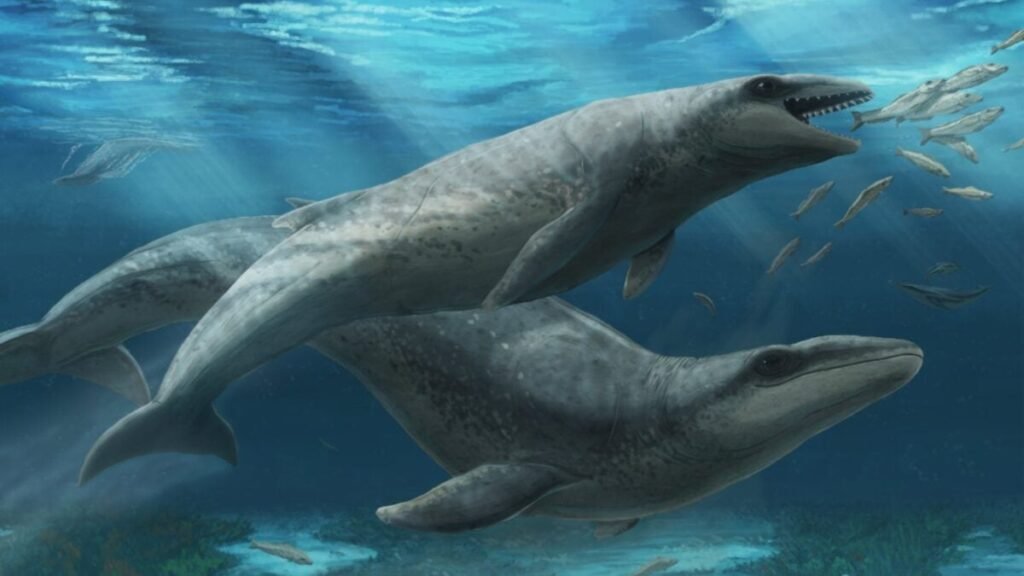The Carnivorous Whale Fossil Altering Marine History in Australia.

The Evolution of Whales: Insights from a Fossil Discovery in Australia
An unexpected discovery on the Australian coast
In 2019, a significant fossil find on the Surf Coast of Victoria shed new light on the evolution of whales. Ross Dullard discovered a partial skull of a young whale with the ear bone still intact and donated it to Museums Victoria. This fossil, one of the best-preserved pieces from the Oligocene period, provided valuable insights into a time when whales were predators with sharp teeth and a fearsome appearance. Analysis revealed that the whale lived approximately 24 to 26 million years ago, in a warmer climate with higher seas.
Janjucetus dullardi: a two-meter predator
The whale, named Janjucetus dullardi, was just over two meters in length. It possessed a short snout, front eyes the size of a tennis ball, and a mouth full of sharp teeth. Unlike modern baleen whales that filter plankton, this ancient whale actively hunted its prey, belonging to the prehistoric toothed whales. This unique discovery highlights the diversity of whale species in Australia, with Victoria being the evolutionary cradle of these atypical creatures.
A unique and diverse lineage in Australia
Victoria has proven to be a hotspot for atypical whale species, with three out of four known species originating from this region. The fossil of Janjucetus dullardi provided unprecedented details of its teeth and inner ear, offering insights into its hunting strategies, orientation, and movement in the water. Through advanced imaging techniques and phylogenetic analysis, researchers confirmed that the fossil belonged to a juvenile specimen, further enriching our understanding of ancient whale evolution.
A history marked by extinction
The mammalodontids, including Janjucetus dullardi, went extinct around 23 million years ago, coinciding with a drop in sea level and global cooling that reduced their coastal habitats. This discovery underscores the diversity of ancient cetaceans and expands our knowledge of their body sizes. By studying this fossil, researchers gain a unique perspective on how ancient whales adapted and evolved to thrive in marine environments. Erich Fitzgerald, chief curator of Museums Victoria, emphasized the significance of this find in illuminating the evolutionary history of whales.






